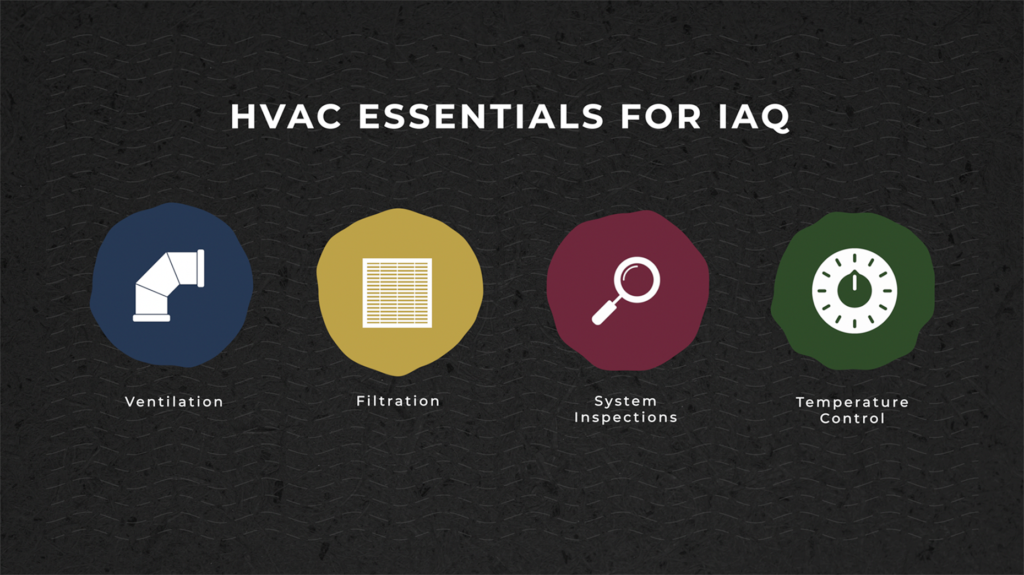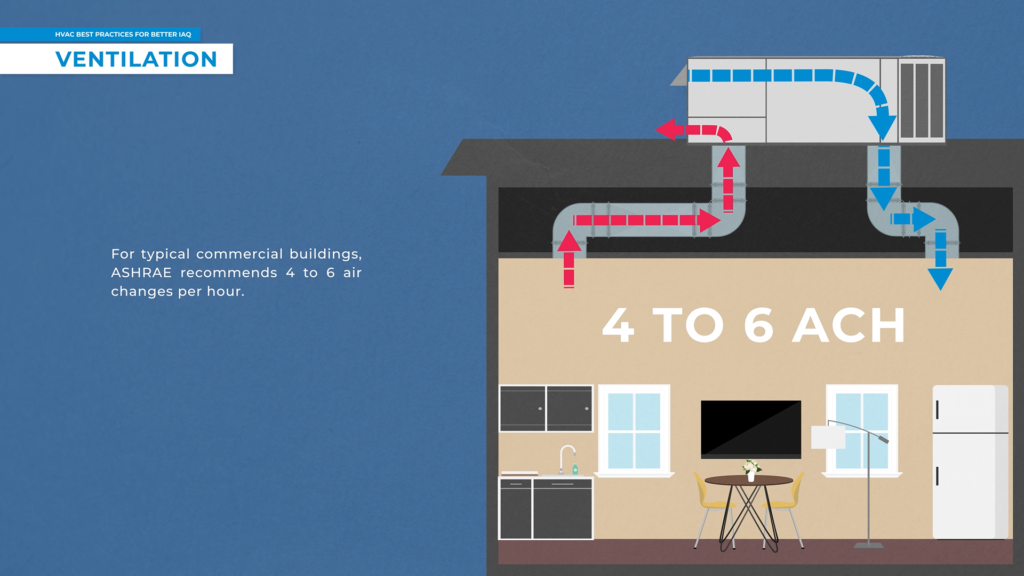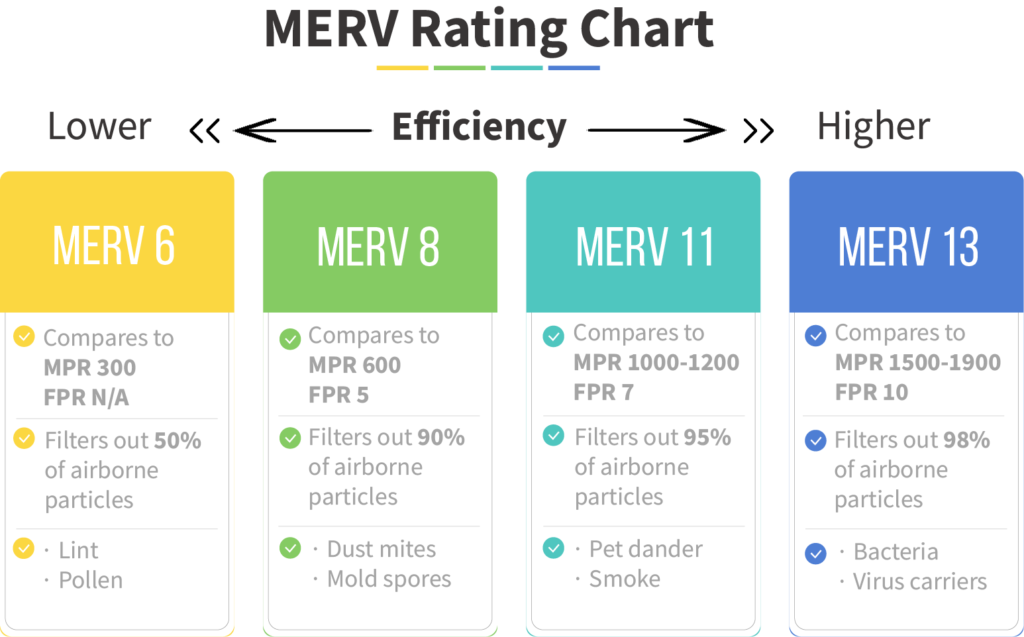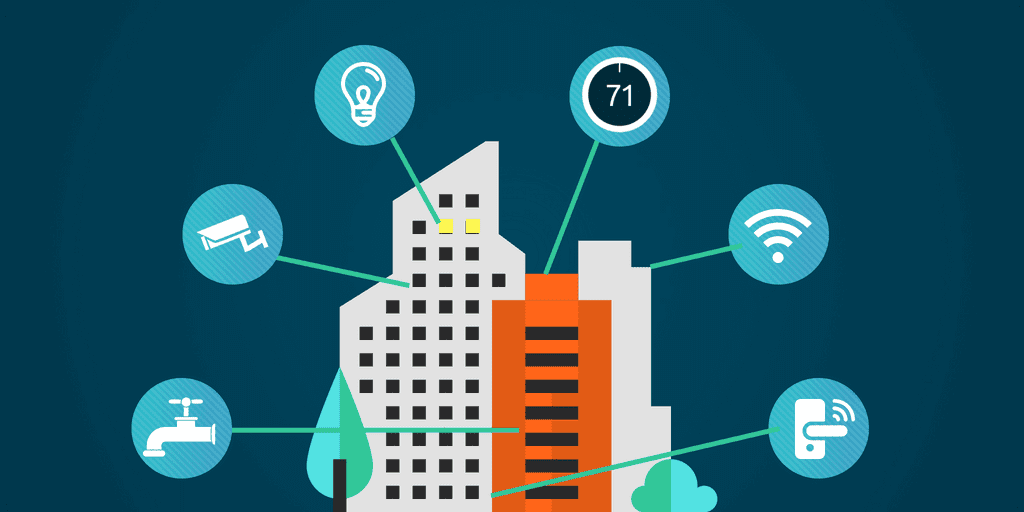The following indoor air quality text was originally published in video form on September 23, 2021; please scroll to the bottom of the post to view the video.
When the global pandemic first hit in 2020, Indoor Air Quality (or IAQ) became the elephant in the room for people that were responsible for HVAC equipment — this includes everyone from CEOs to facility managers and property owners. Measures were taken for businesses to regularly sterilize horizontal surfaces, enforce mask-wearing, and increase social distancing. Individuals were doing their part, but it became clear that the infrastructure of buildings needed to adopt new practices as well.
This brought some questions to the forefront of businesses looking to optimize their indoor spaces, like, “What long-term solutions can be implemented to prevent another pandemic from happening again?” And more precisely, “How can we prevent the spread of germs and disease?” For the individuals responsible for managing HVAC systems, the pandemic has marked a shift in attitude towards indoor air quality from being a nice to have to being a need to have. The good news is that the basics of good IAQ have not changed within the context of HVAC.
There are four essential things that every commercial facility needs to be concerned with when it comes to the quality of their air:

Ventilation
The role of ventilation is to add the proper amount of fresh air from outside of your space to the air inside of your space and remove an equal amount of the old air. The role is so vital that ASHRAE claims it is one of the most important jobs of an HVAC system. It is the difference between fresh air and stagnant, uncomfortable air. And at its worst, poor ventilation can trap indoor air containing toxins and contaminants that can make people sick.
Put simply, the way to prevent this from happening is to increase both the amount of mechanical and natural ventilation within the building. To start, you need to at least meet the building code minimum outdoor air ventilation rates and ensure that building exhaust systems are exchanging the proper amount of air. It’s important that you know what these rates are for your specific facility type within your locality. You will want to find a test and balance professional that can help you measure your systems to see where your air ventilation rates are so that you can adjust accordingly. Testing, adjusting, and balancing are not within the skill set of most HVAC service technicians, so ensure you get the proper help you need.
ASHRAE recommends four to six air changes per hour (ACH) of ventilation for typical commercial buildings to eliminate airborne viral pathogens. However, if doing this causes an increase in energy consumption, it can be offset through other strategies like using Energy Recovery Ventilators (ERV) and improving Building Envelope Performance.

Filtration
Kind of like the lungs of an HVAC system, filters ensure that air circulating through a building is refined for human consumption — they trap particulates and contaminants that can affect our well-being. Therefore, it is important to ensure filters are replaced at the appropriate times and not get overloaded between changes.
According to ASHRAE, a filter rating of MERV 13 is recommended for most building systems. If this isn’t doable, then at the very least, have a minimum of MERV 11 filters. The chart below depicts the overall effectiveness of various MERV-rated filters. The higher the MERV rating, the more effective the filter is at capturing certain types of particles, such as bacteria and virus carriers.

Check out our blog post for more insights into MERV ratings.
System Inspections
The third essential for good IAQ is HVAC System Inspections. Much like taking your car to a mechanic for an inspection or going to the doctor for a yearly physical, your HVAC system needs to be thoroughly reviewed and assessed by experienced HVAC professionals to confirm that all system components function properly. This includes everything from temperature and thermostat checks to inspections of cooling systems, electrical connections, refrigerant levels, safety measures, coils, pressure, and more.
Filters are not the only thing that needs to be maintained in your system, so make sure to check your HVAC service agreement to ensure that comprehensive system inspections are indeed happening. Additionally, ensure that at least one Performance Level Inspection is included in your agreement. This will provide insight into the efficiency of your system and documentation for future maintenance or upgrades.
Temperature Control
We’ve all been in a building that was kept too cold for no good reason or where the heat wasn’t working during a cold spell in the winter…it’s pretty distracting, isn’t it? Both cold and hot temperatures can negatively impact productivity, concentration, and work performance.
Additionally, Thermal Discomfort negatively impacts the efficiency of the human immune system and exacerbates the impacts of illness, so it’s important to consider temperature and resulting thermal discomfort. Most temperature ranges found within buildings won’t significantly impact the viability of pathogens themselves but will affect how humans respond to them.
To better manage the temperature in your facility, you will want to implement a good thermostat system or invest in a Building Automation System. These systems can vary in complexity depending on the needs of the building and keep a building’s climate within a specified range optimized for its respective occupants.

Conclusion
While getting started with Indoor Air Quality, the topic might seem vast and possibly even intimidating, but this shouldn’t be a reason to stop you from deploying the best practices we covered in this blog post. The most important thing is understanding your buildings, the respective HVAC systems, and how the spaces are utilized.
Good IAQ doesn’t have to be costly and doesn’t have to involve incorporating practices beyond the capabilities of the building professions and trades. Taking the time to better the quality of air in your buildings will lead to more productive and happier occupants and a better ROI from those occupants. Additionally, it prevents costly mechanical system repairs, legal costs, and bad publicity.
We hope this blog post helped you understand how to get started optimizing your HVAC system for IAQ. If you are an owner or manager of a commercial facility and looking to improve your indoor air quality, please visit our Indoor Air Quality service page and consider getting in touch with us to find out how we can help. Stay tuned for future IAQ content, where we will discuss topics like Ultraviolet Irradiation and Bipolar Ionization.




